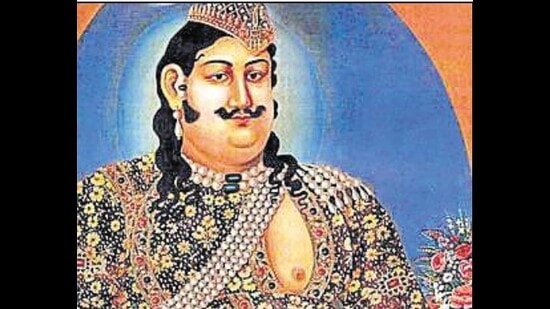It’s time for Lucknow to know the “real” Wajid Ali Shah
Probably for the first time, a long-dedicated study by the city-based Himanshu Bajpai and Pragya Sharma will enable this city of Nawabs to get to know the “real Wajid Ali Shah.”
Embellishing the distinct Nawabi identity of Lucknow the most, Wajid Ali Shah had been at centre of many instances of history. While stories were built around his name and are mentioned to this date, many of them are not verified.

Now, probably for the first time, a long-dedicated study by the city-based Himanshu Bajpai and Pragya Sharma will enable this city of Nawabs to get to know the “real Wajid Ali Shah.”
Busting many myths after about 200 years of Wajid Ali Shah’s birth, the dastango duo of Bajpai and Pragya Sharma have prepared a dastangoi (a storytelling art form) highlighting the facts associated with the life of the last king of Awadh.
For instance, people continue to believe that the last king of Awadh could not run at the time colonial officers annexed the city because his shoe-servants had fled, but this is not true. On the contrary, Wajid Ali Shah was never arrested in the city; instead, he left for Bengal to fight for his rights in 1856.
The research that Bajpai began 10 years back became extensive in July 2022, the bicentenary of Wajid Ali Shah.
“It is my passion for the culture of Lucknow which made me curious about the life of Wajid Ali Shah, who has been the pinnacle of the city’s culture. Reading about him, I came across several stories narrated by people in different ways. Digging into his life and works, I found out about the many myths associated with him,” Bajpai said.
When Sharma stepped into the profession and joined Bajpai, she also got involved in reading about the life and works of the last ruler of Awadh. She shared that she has always been curious about the culture, heritage and traditions of the old city.
“I believe the new generations should know about their roots, not just from the Instagram reels that are popular these days, but from the right references. We have written the dastangoi in Hindustani language with a mix of Hindi and Urdu and in our new dastan we have tried bringing the facts of Shah’s life from his birth till his life in Lucknow. We are also planning for a second part on his life after Lucknow, but it will be brought according to the response from the audience on this dastangoi,” Sharma said.
Bajpai shared with HT that instead of being exiled, Wajid Ali Shah left for Bengal on his own as he believed that the notice of annexation issued by British Resident in the city, James Outram, was illegal.
“He thought talking to Governor General Dalhousie and presenting documents can help him attain his kingdom back. He had taken a few lawyers along with him to support his statement. Wajid Ali Shah had further planned to visit London and meet Queen Victoria, but he fell ill. On his behalf, his mother, Mallika Kishwar, went to London with a lawyer and several gifts,” Bajpai said.
There are stories suggesting that the king was incompetent to rule, and the subjects were unhappy during his rule which is also untrue, Sharma said.
“We must think that if the subjects were not happy with the rule of Wajid Ali Shah, why did they follow him till Kanpur when he was on his way to Bengal via Kanpur and Varanasi. They followed him out of an emotional connection people shared with him. Contemporary historians have also written that people of all religions did not celebrate any festivals for one year after Wajid Ali Shah left,” Sharma added.
There are folk songs like: “Toye bin hamka barkha na suhaye, o calcutte wale jawaiye allah tumhe laye” (We don’t enjoy without you, O rulers in Kolkata may God bring you back) and “Hazrat Jate hai London, Humpar kripa karo Raghunandan” (Our saint is going to London, bless us Raghunandan).
Bajpai also said Shah was a master of the performing arts.
“He was the first Urdu drama writer and director. He wrote ‘Kissa Radha Kanhaiya Ka’ in 1842-43. He also got it staged in Rahas Manzil; the first drama theatre made in Qaiserbagh which was destroyed during the siege of 1857. The flute and crown used in the play were worth several lakhs. This shows his passion for art. He was also trained in sitar and Kathak by masters of those times,” said Bajpai.
The duo is planning to stage at least 100 shows in Lucknow so that they can sensitize the young generation about the last king of the region. Bajpai shared he wish to continue staging this dastan for as long as he can.
They will be quoting references to make the dastan more credible. The duo has read books written by scholars like Masood Hasan Rizwi Adeeb, Kokab Qadra and GD Bhatnagar, besides, reading several books written by Shah, including his biography “Husn-e-Akhtar”. They have also worked with historians including Roshan Taqui to verify the facts for their dastan.






